The Acropolis is the centerpiece of Athens. Rising up from the city center is a rocky, fortified, limestone plateau, topped with the Parthenon and several other ancient monuments. For most visitors to Athens, a visit to the Acropolis tops the list of things to do, making this a very popular place to visit. If you want to know how to visit the Acropolis, we have a lot of information to share with you.
Ticketing has changed a few times over the past two years. Starting in 2024, timed entry tickets were required to visit the Acropolis. And most recently, the money saving and very convenient Combination Ticket was discontinued as of April 1, 2025.
All of this was done as a way to control the number of visitors at the Acropolis and the most popular sites in Athens.
There is a lot you need to know as you plan your visit to the Acropolis…if you just show up, you risk waiting in extremely long lines, with the chance that tickets are sold out for the day.
In this article, we will cover:
- How to book your time slot in advance
- What you will see while you are here
- How to avoid the crowds
- If you need a guide
A Brief History of the Acropolis
The word “acropolis” is defined as a citadel or fortified part of an ancient Greek city, typically built on a hill. There are other acropoleis in Greece, however, the Acropolis of Athens is the most famous.
This rocky hill has been inhabited since the 4th millennium BC. The buildings that still stand today were constructed under the direction of Pericles in the 5th century BC. The Parthenon, the Temple of Athena Nike, the Propylaea, and others, are the remnants of the Golden Age of Greece.
The Parthenon dominates the Acropolis. This is one of the most recognizable and imitated buildings in the world. It was built to honor the Greek goddess Athena Parthenos, the patron of Athens, and it is considered to be the most important surviving building of Classical Greece.
Since its construction, the Parthenon has also served as a Christian church and as an Islamic mosque. A portion of the Parthenon was destroyed when the Venetians struck and hit the building with a mortar round, fired while attacking the Ottomans.
Since 1975, the Acropolis and the Parthenon have been undergoing extensive renovation. The marble columns of the Parthenon are being restored and most likely you will see scaffolding holding up the portions of the Parthenon during your visit. Many of the artifacts have been moved to the Acropolis Museum, located in Athens, and the British Museum, located in London.
The Acropolis is one of the most popular tourist attractions in Europe.
Practical Information
Tickets
There is now just one ticket option for entrance into the Acropolis and Parthenon (the combination ticket has been discontinued).
Acropolis Tickets
Summer: April 1 to October 31: €30
Winter: November 1 to March 31: €15
There is free admission to the Acropolis on these days: March 6, April 18, May 18, last weekend of September, October 28, and the first and third Sundays of each month from November 1 to March 31.
The Combination Ticket Has Been Discontinued
As of April 1, 2025, visitors can no longer purchase the combination ticket. This ticket, which costed €30, included the Acropolis plus six other archaeological sites: the Ancient Agora, Roman Agora, Hadrian’s Library, Temple of Olympian Zeus, Kerameikos, and Aristotle’s School.
Not only did it save a lot of money, but it also skipped the ticket line into all of those sites. Now, for each of these sites, tickets can be purchased online or a the entrance, and the prices really add up. Those sites cost €5 to €20 each.

How to Purchase Your Acropolis Tickets
It is now mandatory to book a time slot in advance. This started as of September 2023, due to increased visitation of the Acropolis and Athens.
On the official website, you will purchase your tickets in advance for a specific day.
To navigate the website, choose “Attica & Central Greece” as the region and then “Acropolis and Slopes.” Select your date and your time slot. Complete the purchase.
If tickets are sold out on the official website for the time slot you prefer, you can also purchase an entry ticket through GetYourGuide:
Free Entry Vouchers: If someone in your group qualifies for free entry and you are purchasing your tickets online, you will be sent a voucher by email. This voucher will need to be turned into the ticket booth for an official ticket. So, even though some members in your group can skip the ticket line, if you are traveling with kids, you will still have to wait in the ticket line to get the official entrance ticket.
More Ticket Options: You can also purchase an entrance ticket into the Acropolis and the Acropolis Museum through GetYourGuide. If you prefer to visit the Acropolis with an experienced guide, this tour of the Acropolis gets stellar reviews.
At the Acropolis
It is possible to show up at the Acropolis and purchase a ticket. However, you run a big risk, not only in that there could be a long ticket line, but the fact that tickets could be unavailable. There is a limit to the number of visitors each day, so tickets can sell out.
There is a ticket booth at both entrances (the main entrance and the south entrance, which is near the Acropolis Museum).
Hours of Operation
From April 1 to August 31: 8 am to 8 pm (last admission 30 minutes before closing) with reduced hours the remainder of the year. You get the full listing on the official website.
The Acropolis will be closed on these days: January 1, March 25, May 1, Easter Sunday, December 25, December 26.
Get updated hours and pricing here.
How to Get to the Acropolis
There are two entrances into the Acropolis.
The main entrance is at the western end of the Acropolis. This entrance is notoriously busy. I have read that midday people can wait one to two hours to purchase a ticket here.
There is a smaller ticket office at the southeastern corner of the Acropolis. In the past, less visitors knew about this entrance, so it was a great spot to enter the Acropolis without waiting in a long line, but that has changed, too. Lines are now similar at the main entrance and the southeastern entrance.
Here is a photo midday on a Sunday in April. You may still have to wait in line, but hopefully you won’t have to wait as long as you would at the main entrance.
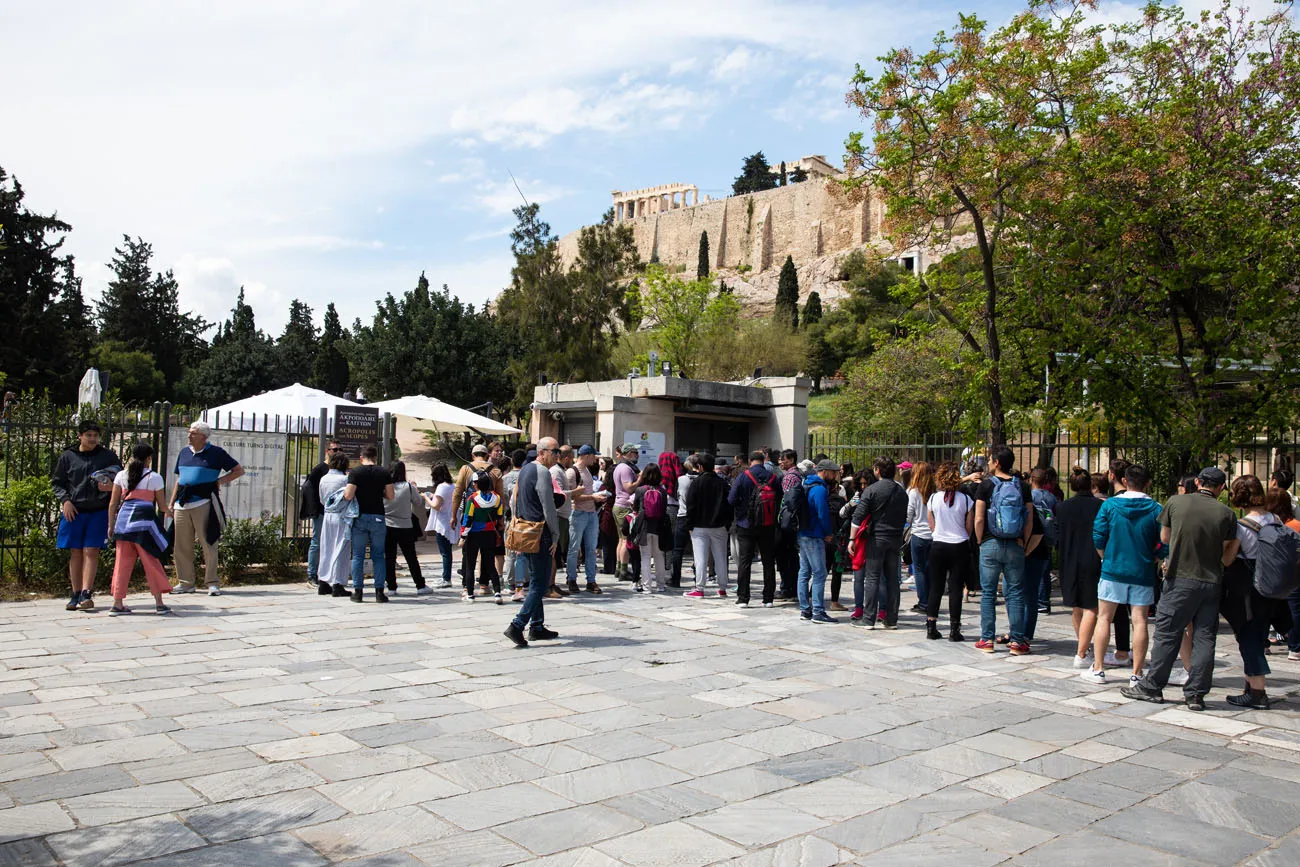
Entrance at the southeast corner of the Acropolis
From this entrance, it is a steady uphill walk past Dionysus’ Theater and past a great viewpoint over the Odeon of Herodes Atticus before you get to Propylaea, the entrance into the Acropolis.
There is an elevator on the northeastern side of the Acropolis that provides access for people in wheelchairs. Learn more here.
Map of the Acropolis
How to Use This Map: Click the icons on the map to get more information about each point of interest. To take this map with you, click the star next to the title of the map which adds it to your Google account. Next, within your Google Maps app, select ‘Saved’ and then select ‘Maps’. This map title will now appear in your list.
Tips to Avoid the Lines at the Acropolis
1. Purchase Your Ticket Online in Advance
Before your visit to Athens, book your ticket online in advance. You will book a time slot for entry into the Acropolis and you will not have to wait in a ticket line.
2. Best Time to Visit the Acropolis
The least crowded time of day to visit the Acropolis is right at opening time (8 am) and at the end of the day (1 to 2 hours before closing).
The last hour of the day would be a wonderful time to visit the Acropolis. Crowds are low, the sun is starting to set, and it’s no longer sweltering hot (if you are here in summer). We saw very people on the Acropolis the hour before closing.
The worst time to visit is midday, especially in the summer. Crowds are high and so are the temperatures. Cruise ship crowds tend to swarm the Acropolis from 10 am to early afternoon, so try to avoid this time if you can. Even if you already have your ticket, you could still be stuck in a line waiting to enter through the Propylaea.
We braved rainy weather conditions and it worked out to our advantage. All day it had been overcast and drizzly, but in the afternoon, the skies finally opened up for real. The rain washed most visitors off of the Acropolis and sent them right down to the Acropolis Museum. We decided to take our chances and visit the Acropolis in the rain. Off in the distance, it looked like the sky would clear, so we kept our fingers crossed for improving conditions.
The four of us entered through the smaller side entrance, took our time walking up towards the Proplylaea, and once here, the rain stopped. The sun even made an appearance a little while later. Even though it was mid-afternoon on a Saturday, we shared the Acropolis with just a handful of other people. It was absolutely incredible and I know that we are extremely lucky for our timing and the weather to work out like this.

The Parthenon (in 2019) | How to visit the Acropolis
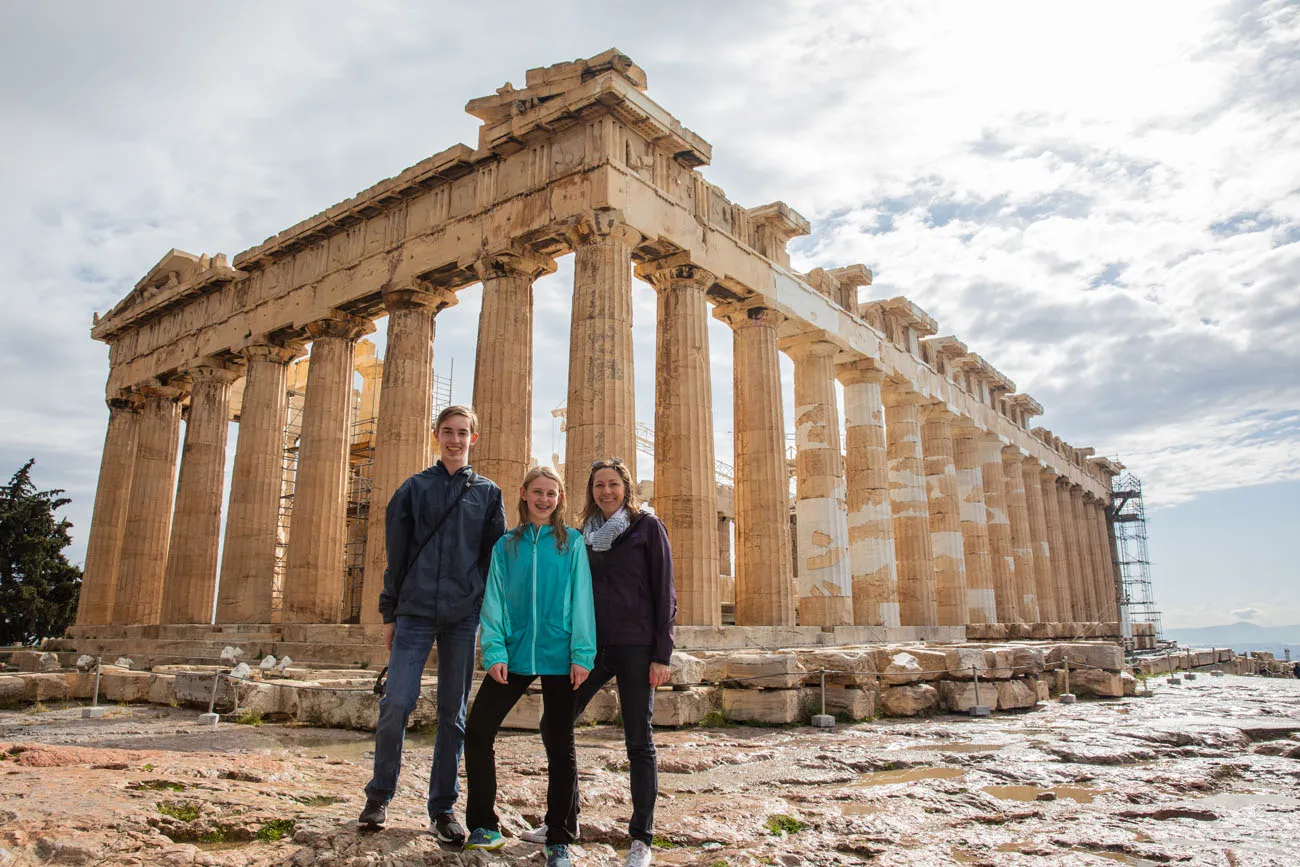
In our photos, the sky looks very dark. We had a big downpour but there was no thunder or lightning.
I would not recommend visiting the Acropolis during a thunderstorm. Once you are up here, there is nowhere to take cover from lightning, should it occur. It’s not like you can run for cover under the Parthenon. And you should know that these marble surfaces get slick when it rains, but if you don’t mind wet conditions, it’s one way to visit the Acropolis with low crowd levels.
3. Enter through the Side Entrance
Even though lines are similar, you could still give this an entrance a try, versus the main entrance. Plus, if you visit the Acropolis Museum first, this is the most convenient entrance into the Acropolis.
5. Join a Tour
Tours include your entrance ticket, which saves the wait in the ticket line. You still have to pass through the entrance booth and security, as do visitors who purchased their tickets online in advance, so there is still a chance you will have to wait in some sort of line.
Tours of the Acropolis
Things to Do at the Acropolis
The sites on the Acropolis are organized into two areas, the Acropolis and the slopes. The sites on the Acropolis include the Propylaea, the Temple of Athena Nike, the Parthenon, and the Erechtheion. Those on the slopes are located on the south side of the Acropolis and include the Odeon of Herodes Atticus and the Theater of Dionysus.
Propylaea
This is the gateway into the Acropolis. If you enter through the main entrance, this will be the first thing you see. It’s a grand entrance, meant to impress visitors with its colonnaded entryway and marble buildings.

Propylaea

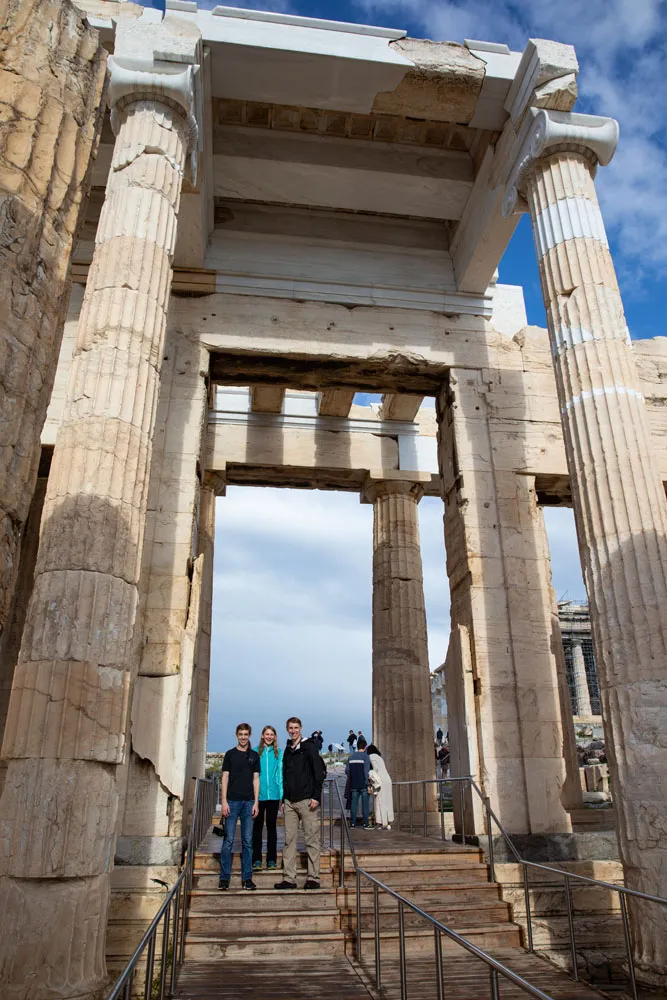
Temple of Athena Nike
The Temple of Athena Nike stands next to the Propylaea. This small temple is dedicated to the goddess Athena Nike who was the protector of the city of Athens. It was recently renovated…completely taken apart and then put back together again…about 15 years ago.
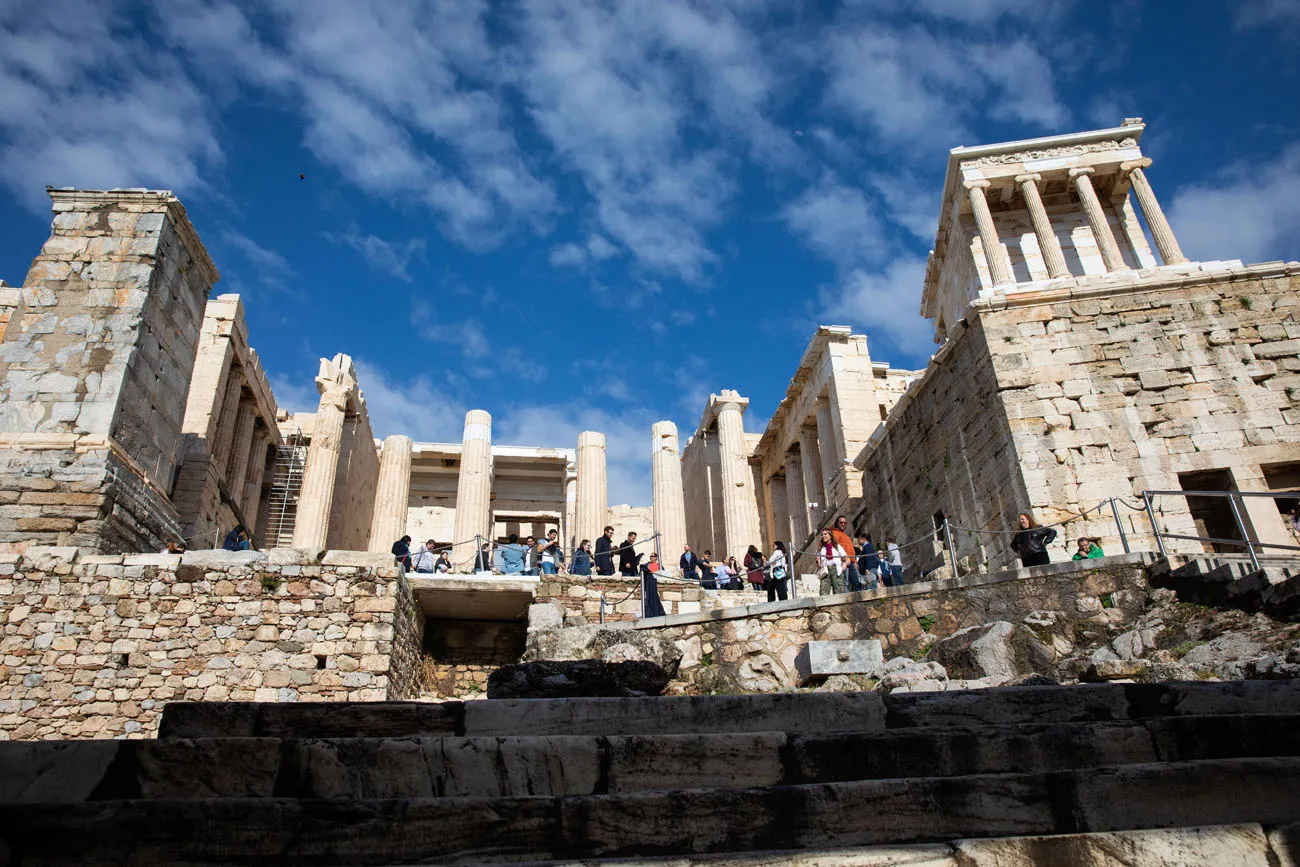
The Temple of Athena Nike is the small, colonnaded building near the upper right hand corner of this photo.
Parthenon
The Parthenon is the centerpiece of the Acropolis. For many visitors this is the main reason for visiting Athens.

First view of the Parthenon after walking through the Propylaea.
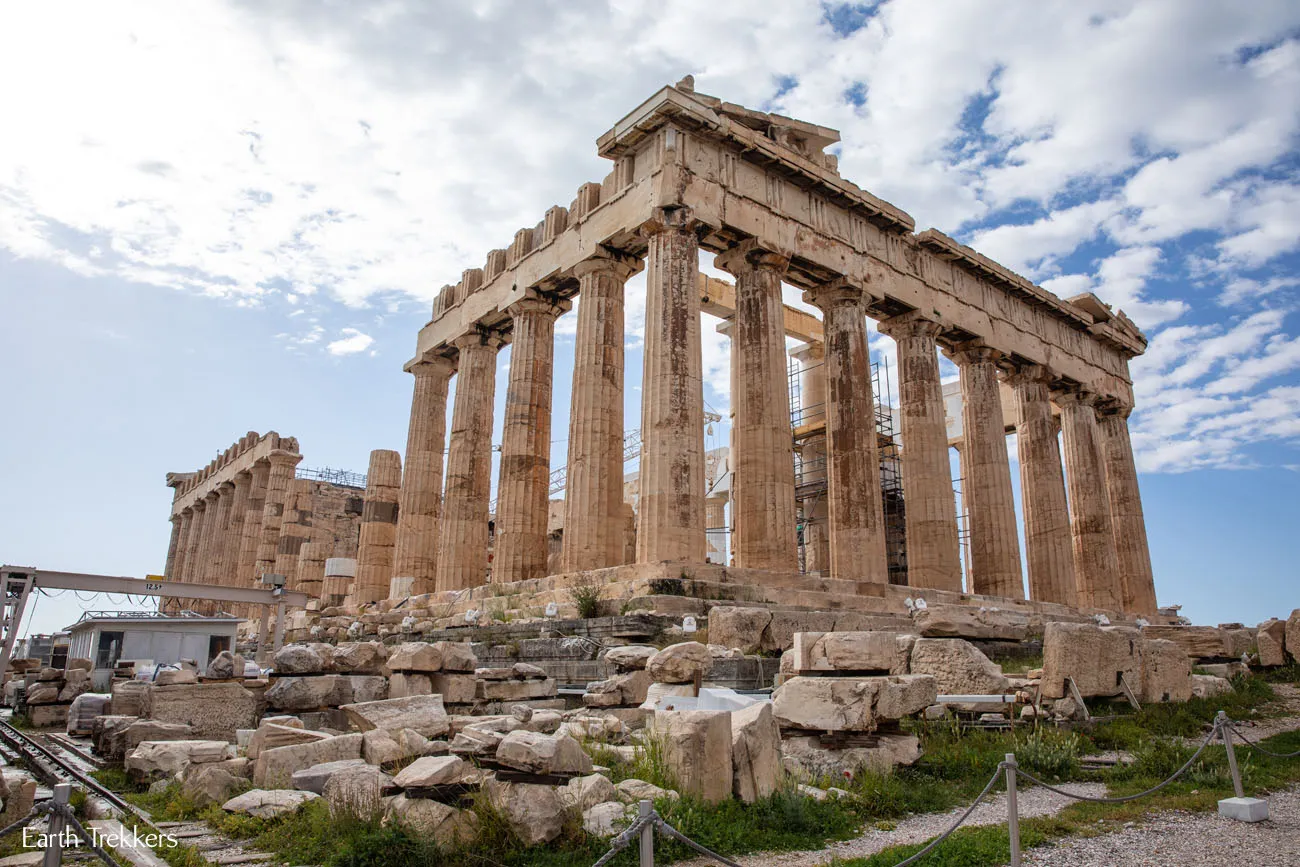
Since the Parthenon is undergoing major renovation work, part of it will be covered with scaffolding, and it will remain like this for some time. Even so, it’s an amazing sight to see.

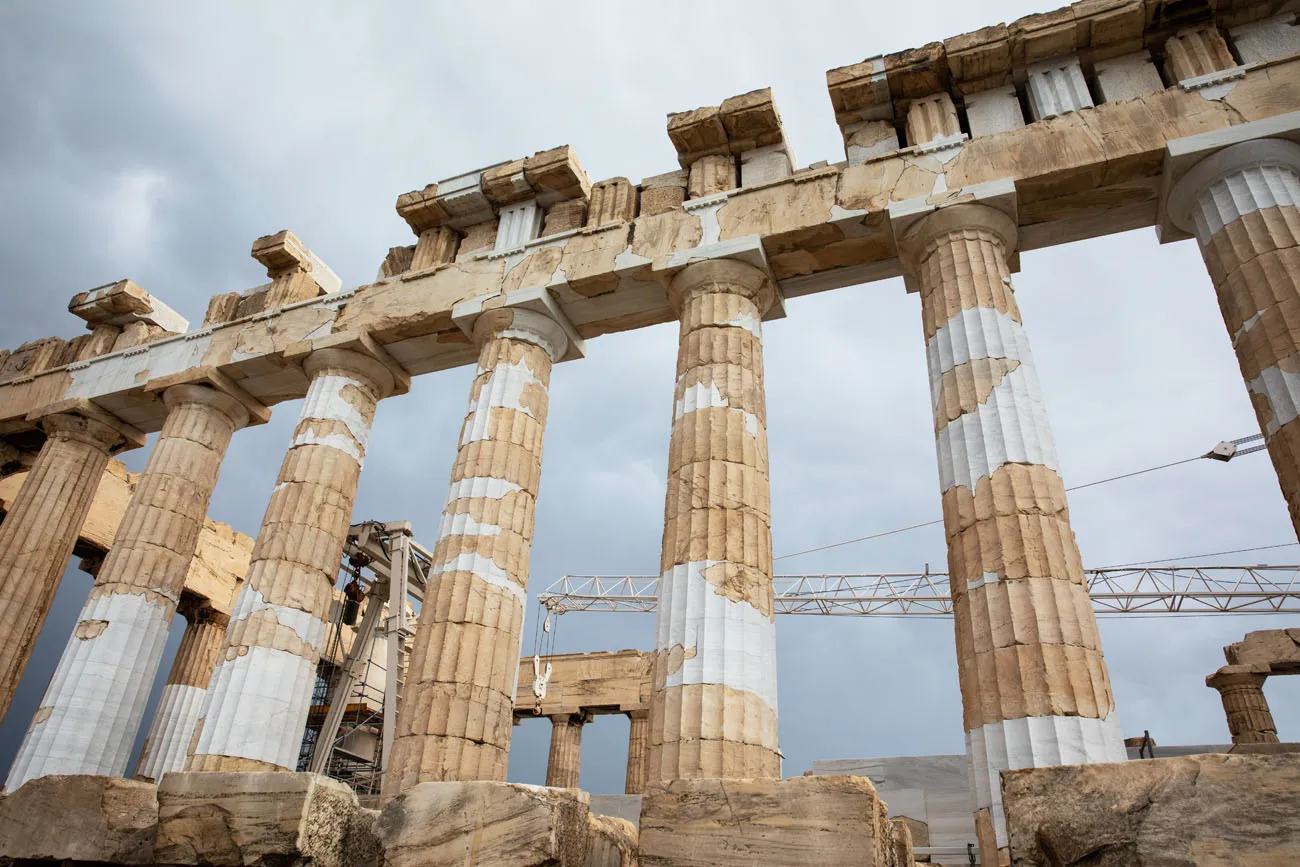

You are not allowed to walk onto the Parthenon but you can walk around the entire circumference of it.
Erechtheion, Pandroseion, and the Old Temple of Athena
What appears to be one building is really three separate temples and sanctuaries. These were built on a sacred spot on the Acropolis, the site where Athena and Poseidon battled for patronage of Athens, the site where a salty spring appeared when Poseidon hit the ground with his trident, and the site where an olive tree grew when Athena hit the ground with a rock.
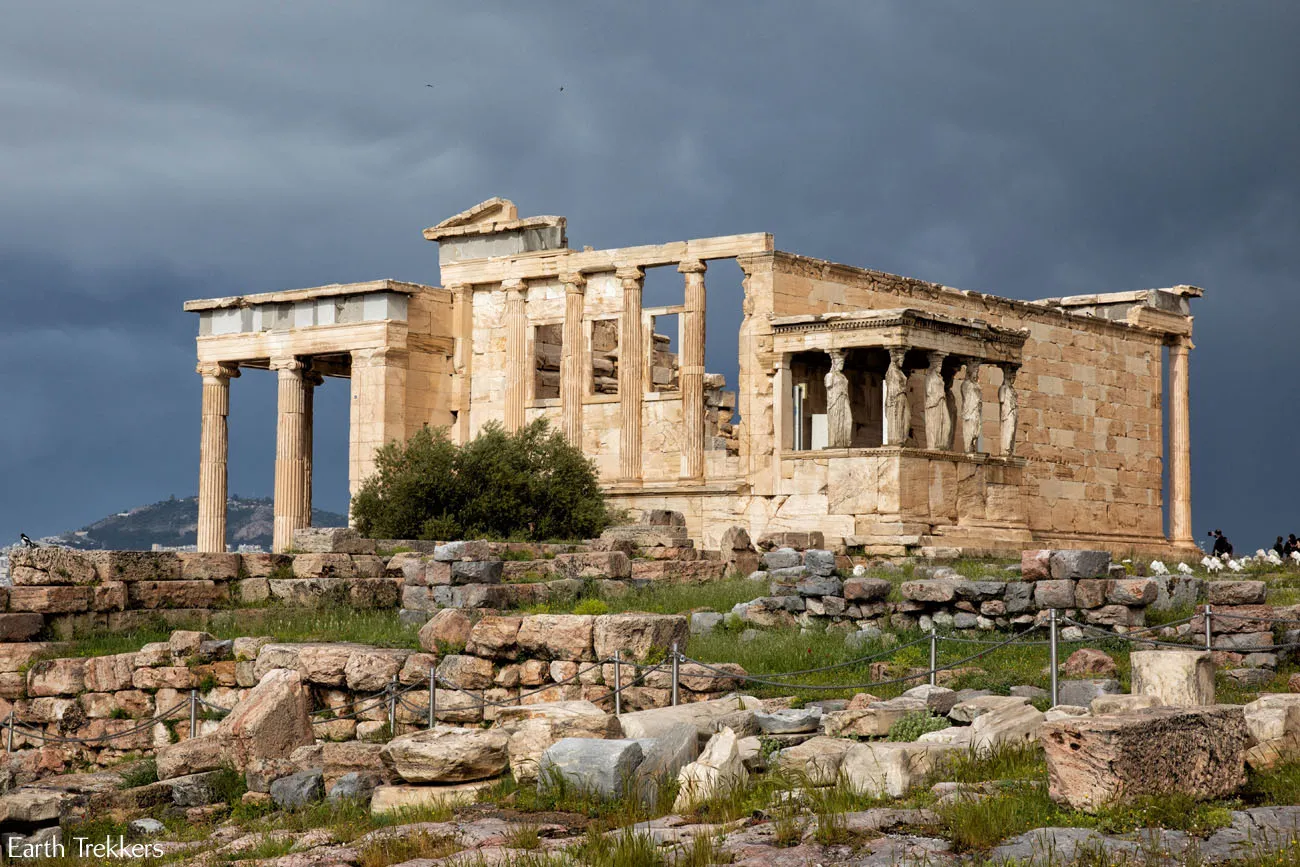
An olive tree still grows beside the building, although this tree was planted at the beginning of the 20th century.
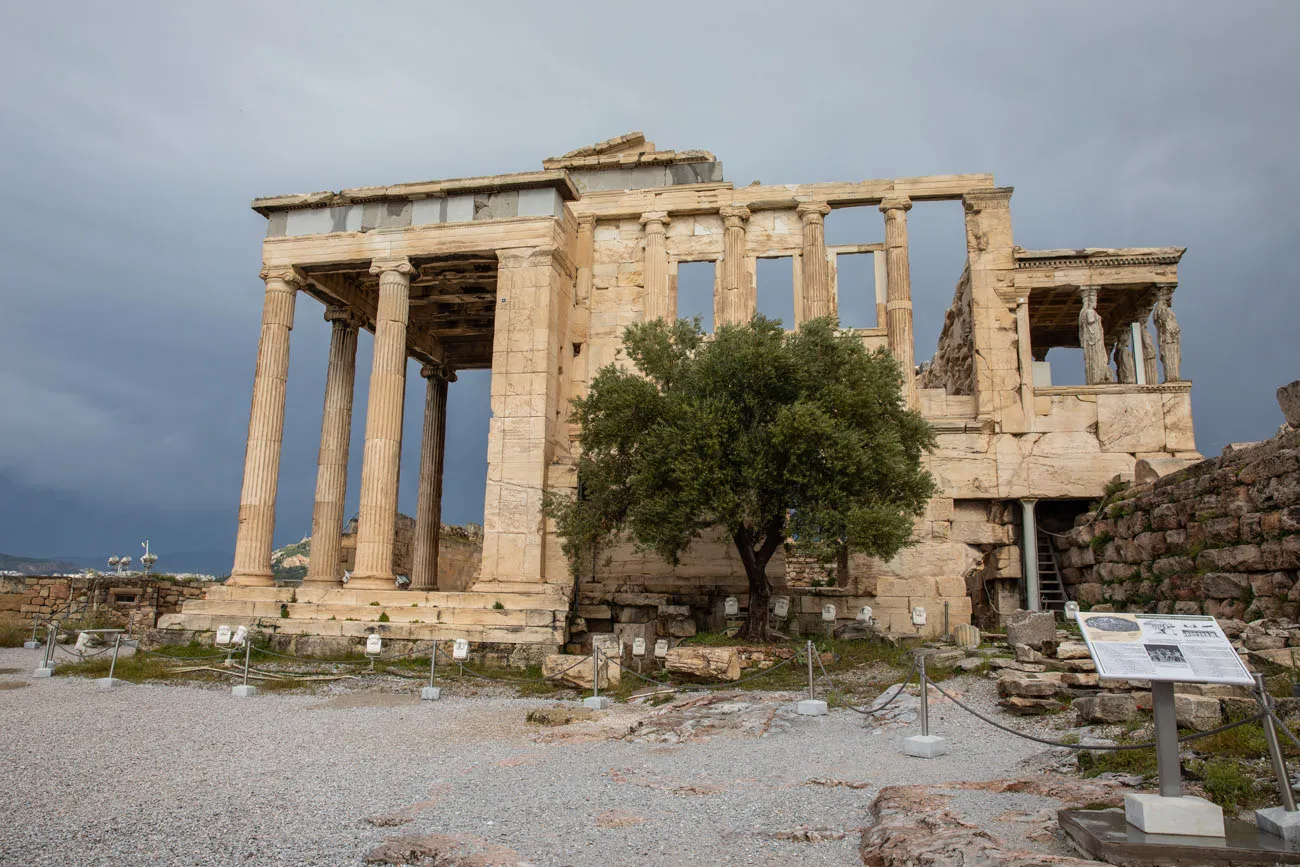
One of the most startling features are the famous Caryatids, six female statues who serve as columns to support the roof of the porch.
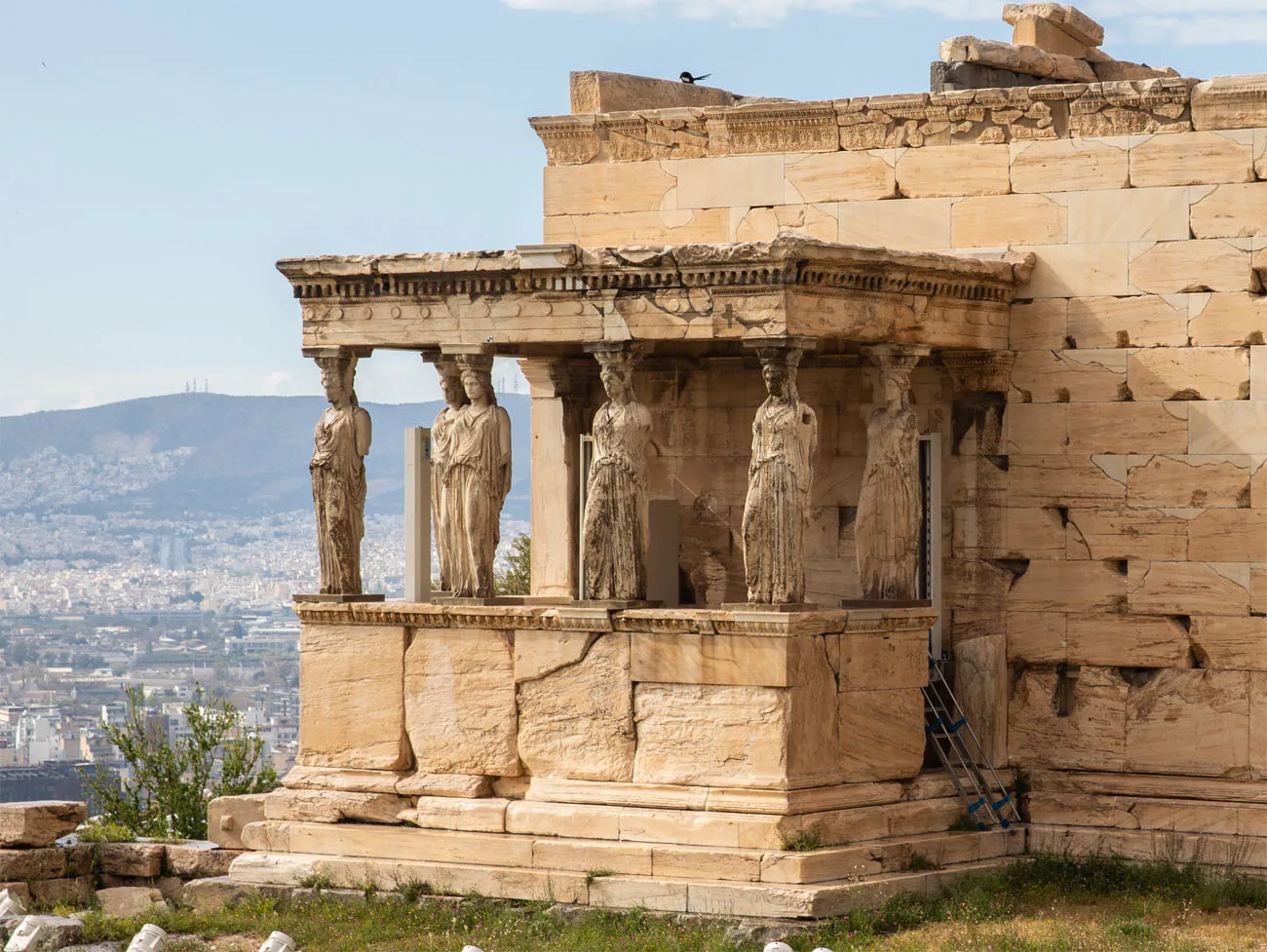
Viewpoint of the Acropolis and Athens
Located at the far eastern end of the Acropolis is a slightly elevated viewpoint. Just look for the Greek flag. From here, not only do you get a wonderful view across the Acropolis and the Parthenon, but you also get one of the best views over Athens.
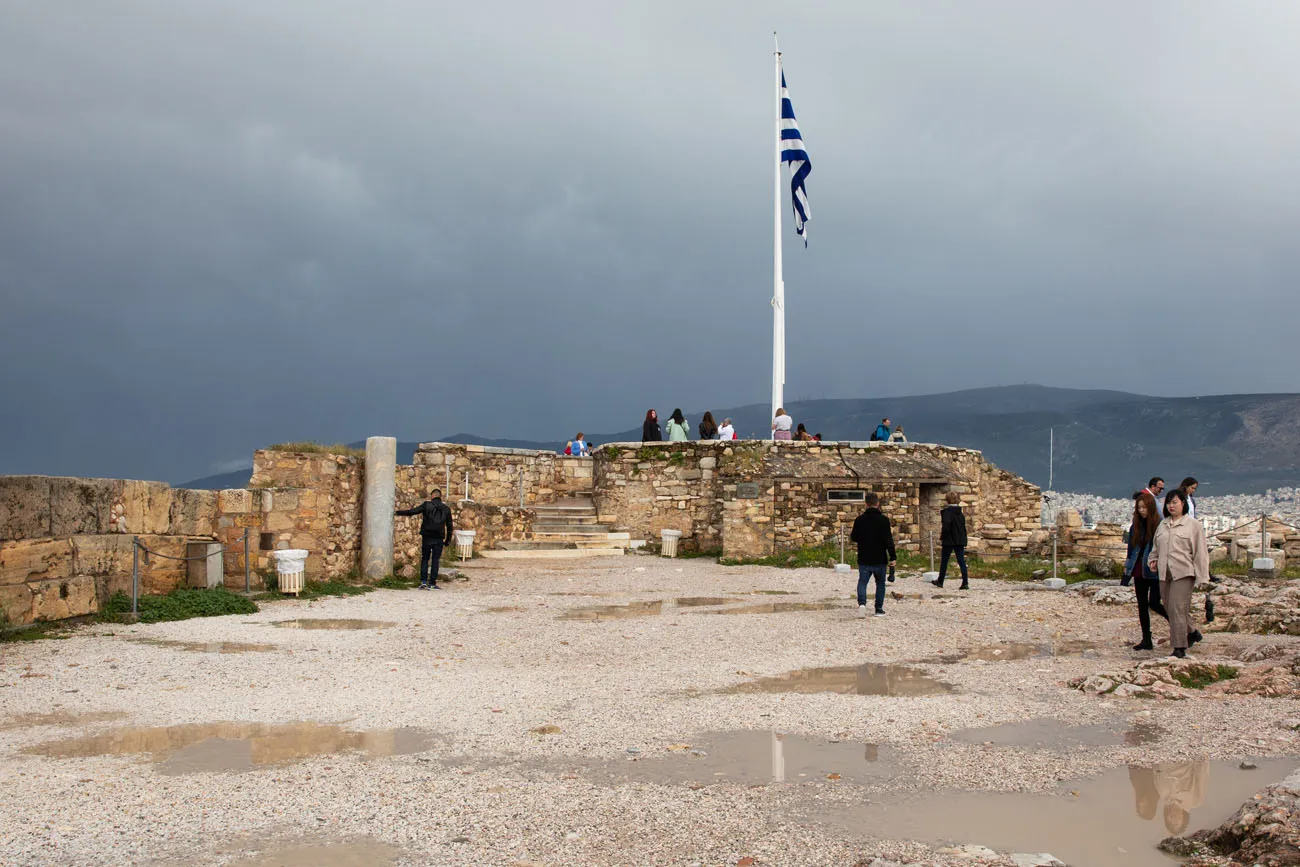
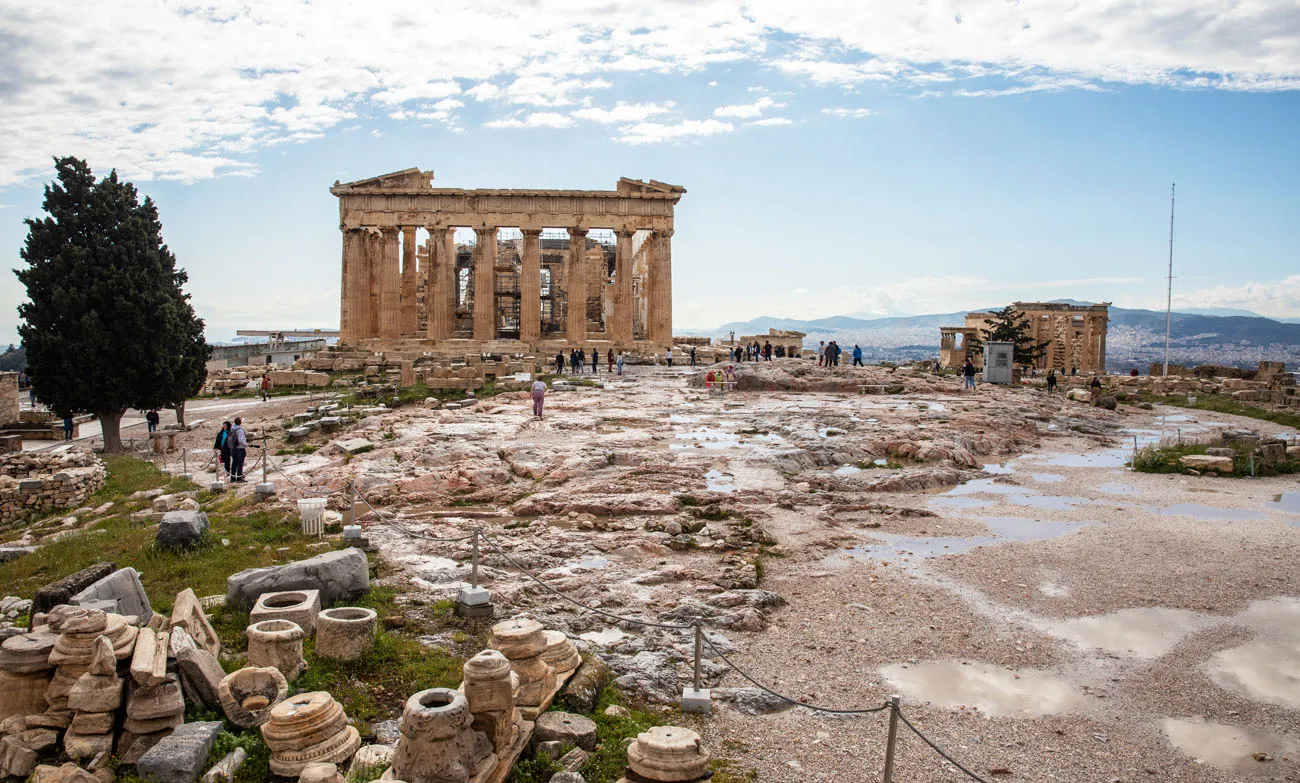
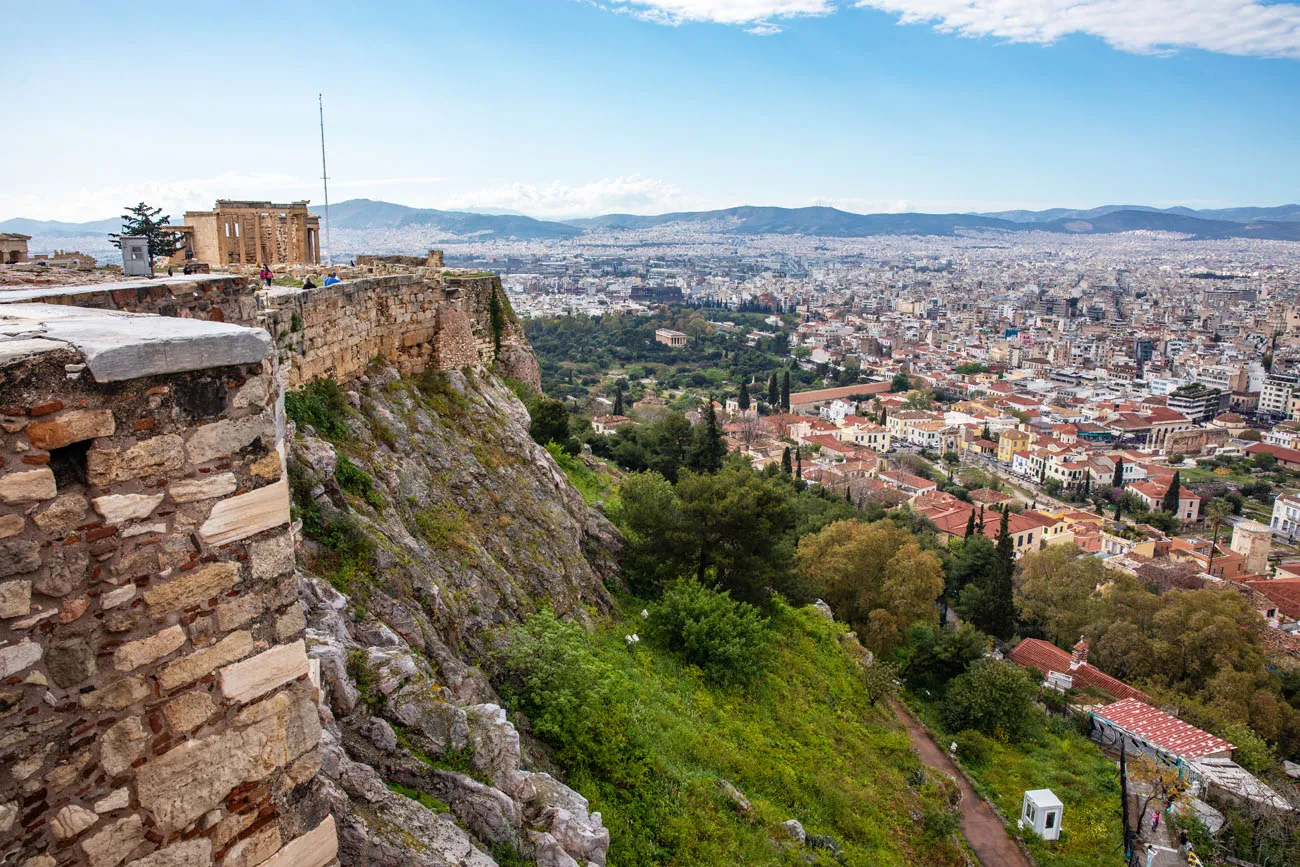
View from the Acropolis

Looking east from the Acropolis. In this view you can see the Temple of Olympian Zeus and a small part of the Panathenaic Stadium.
Theater of Dionysus
Located on the southern slope of the Acropolis and near the Acropolis Museum is this ancient theater. It was built in the 4th century BC and the Greek tragedies of Euripides and Sophocles were performed here.
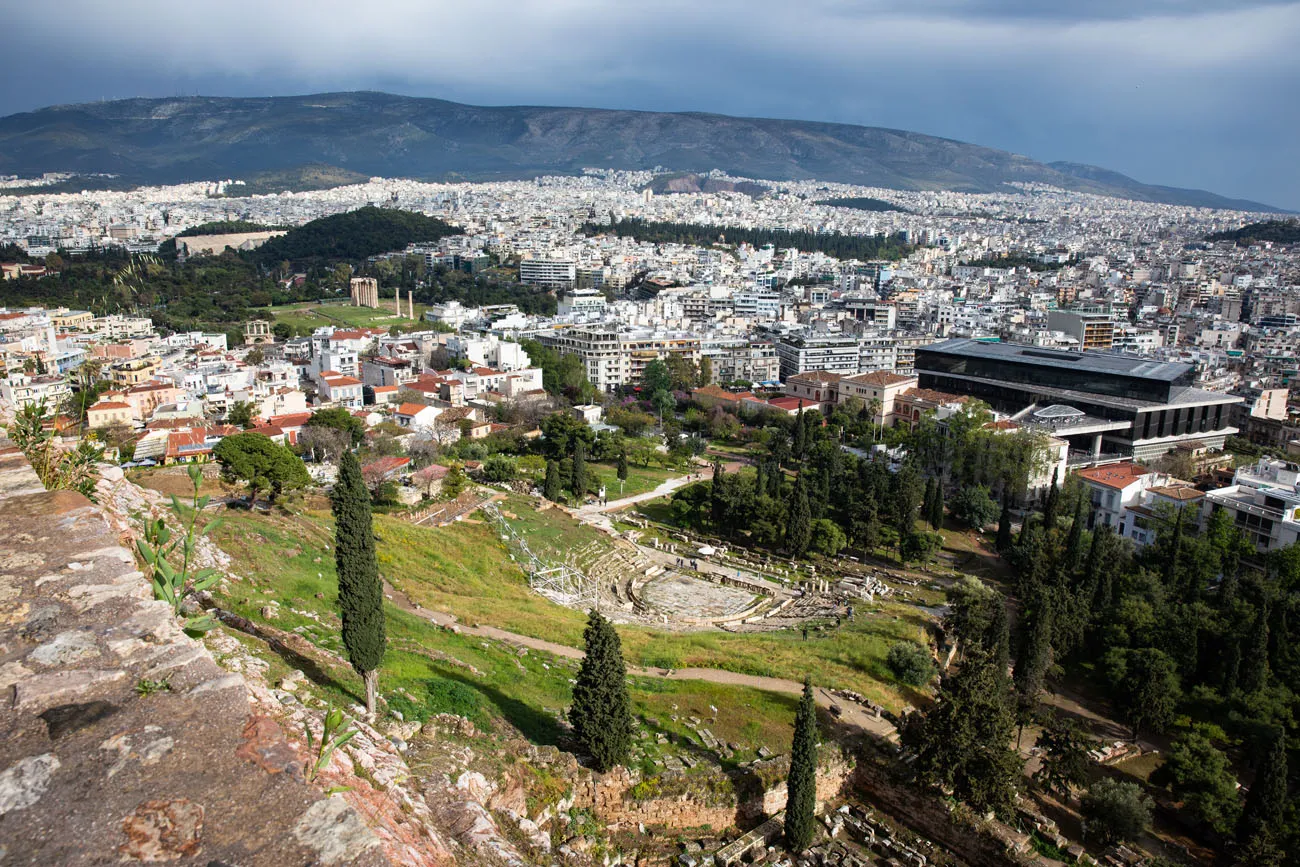
The view of the Theater of Dionysus from the Acropolis. You can also see the Acropolis Museum and the Temple of Olympian Zeus in this photo.
Odeon of Herodes Atticus
This is one of the more “modern” buildings on the Acropolis, built in 161 AD. This theater can accommodate almost 5,000 people and it is still used for performances during the summer months. It is located on the southern slopes near the Propylaea.
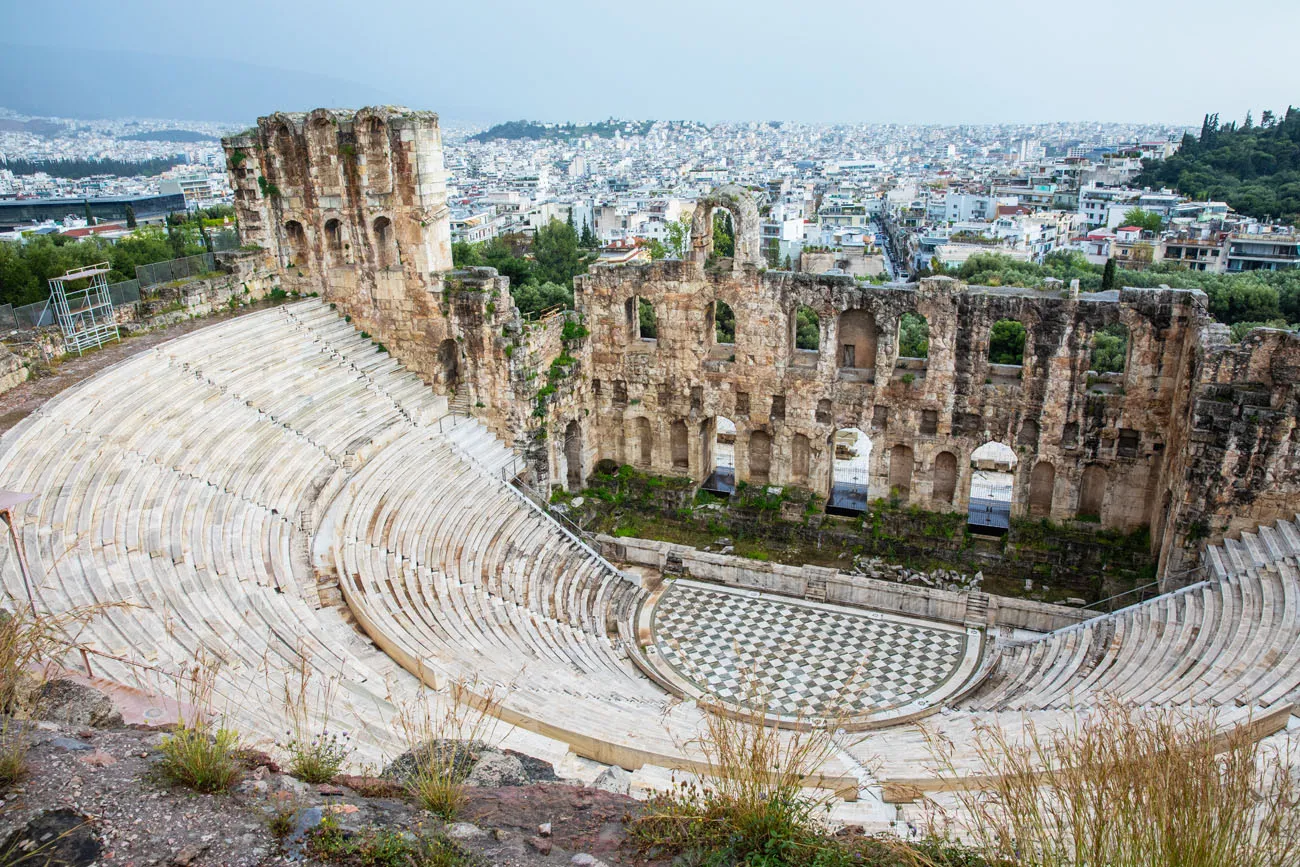
Odeon of Herodes Atticus
What to Bring
Wear a pair of comfortable walking shoes with good traction. The surfaces are uneven and the marble can be slippery. This gets even worse if it’s wet, so be prepared for slippery surfaces if you are here during or after it rains.
Sunblock and sunglasses are a must. There is no shade on the Acropolis.
Bring water, especially if you are visiting during the summer months.
Do You Need a Guide?
A guide is not necessary to visit the Acropolis.
Each building on the Parthenon and the slopes have signs that give you the history and importance of each site. Signs are written in Greek and English.
If you want more info than just a few signs but don’t want to take a tour, consider purchasing Rick Steves’ Greece Travel Guide. He has a very nice walking tour through the Acropolis with lots of interesting facts about the Parthenon and the history here.
For those who want to get the most out of their visit, and learn the history of the Acropolis, taking a tour is worth it. This small group tour gets rave reviews and this guided tour also includes a visit to the Acropolis Museum.
A visit to the Parthenon can last one to three hours.
After Your Visit
You can exit through the side entrance and make the Acropolis Museum your next stop. Or, exit through the main entrance and walk to Areopagus Hill (Mars Hill) for a stunning view of Acropolis.

Areopagus Hill | How to visit the Acropolis
About Our Visit
We visited Athens in mid-April during Easter holiday week. From here, we went to Mykonos, Naxos, and Santorini.
Are you planning a visit to Athens and the Acropolis? Comment below if you have any questions or if you want to share your experience.
More Information for Your Trip to Greece
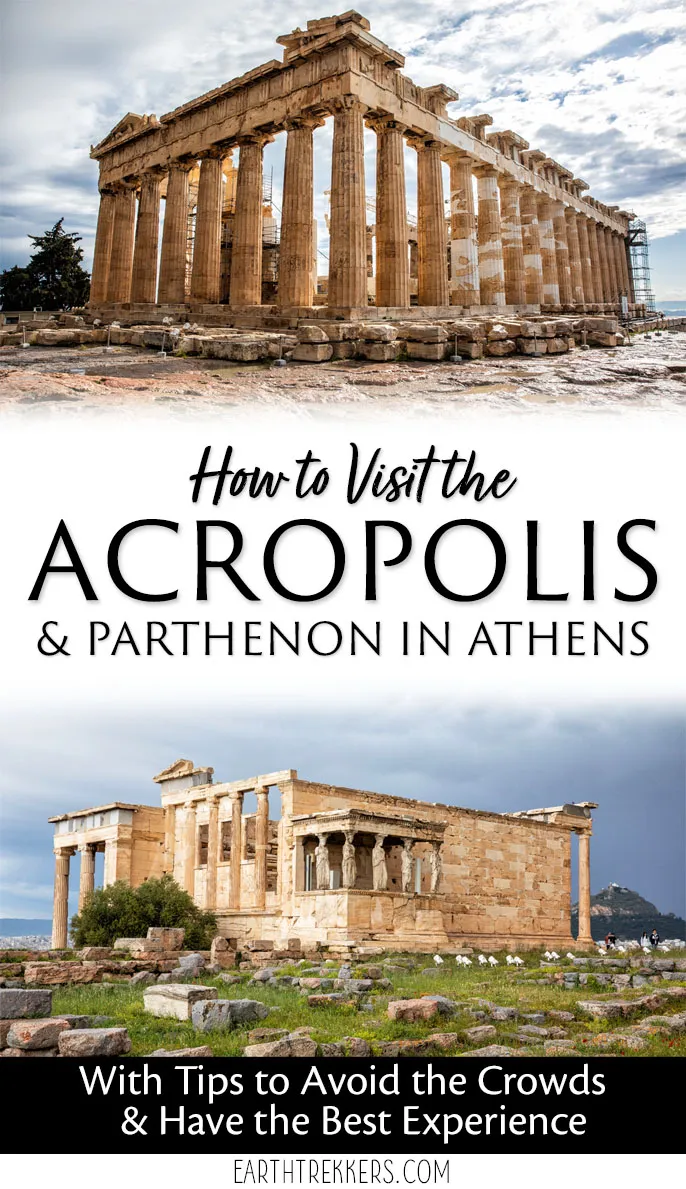
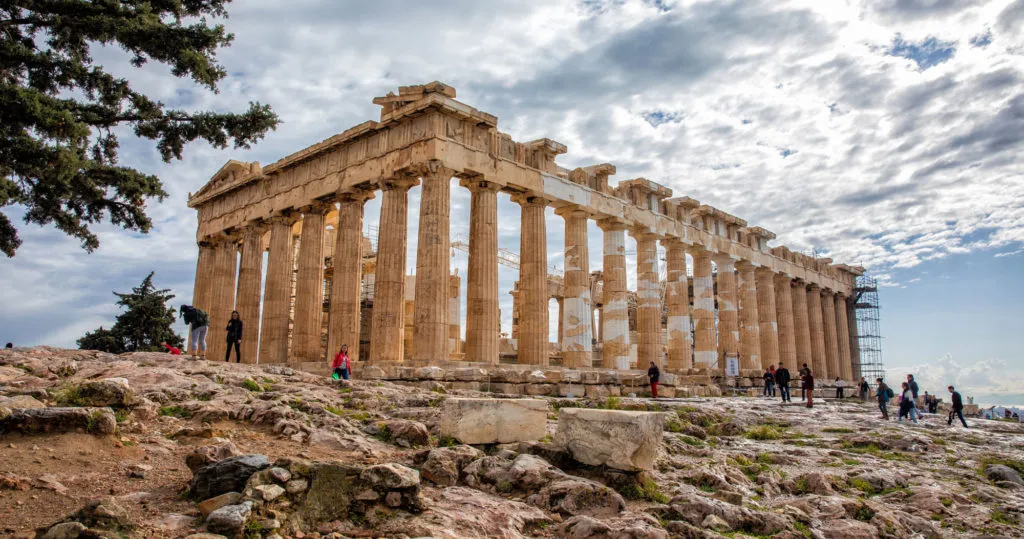
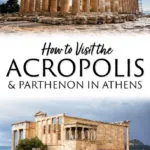

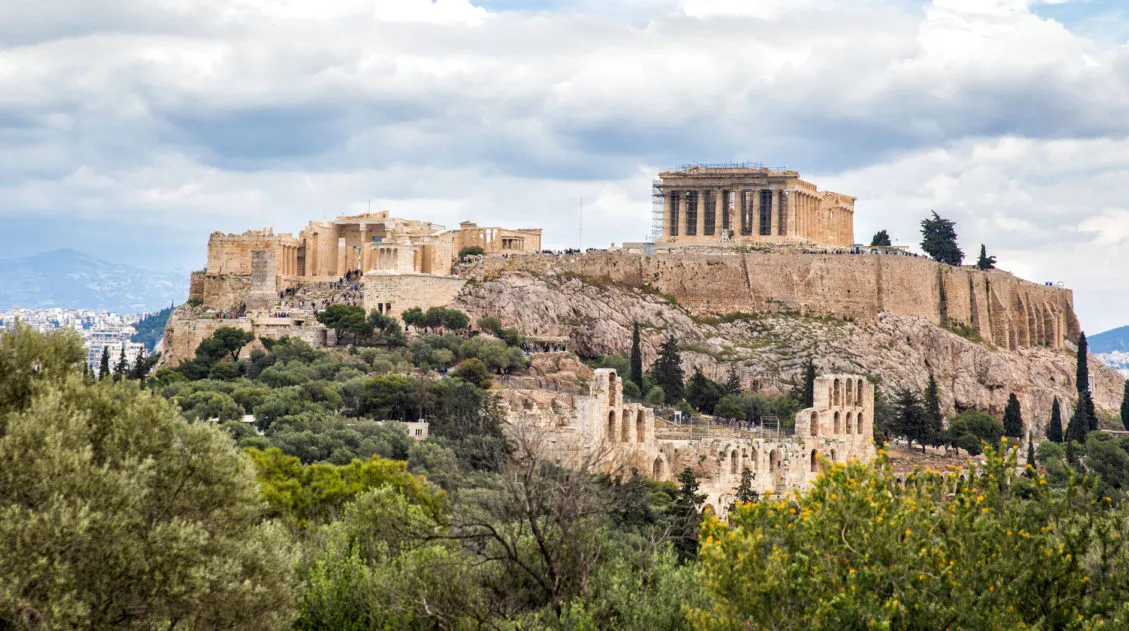


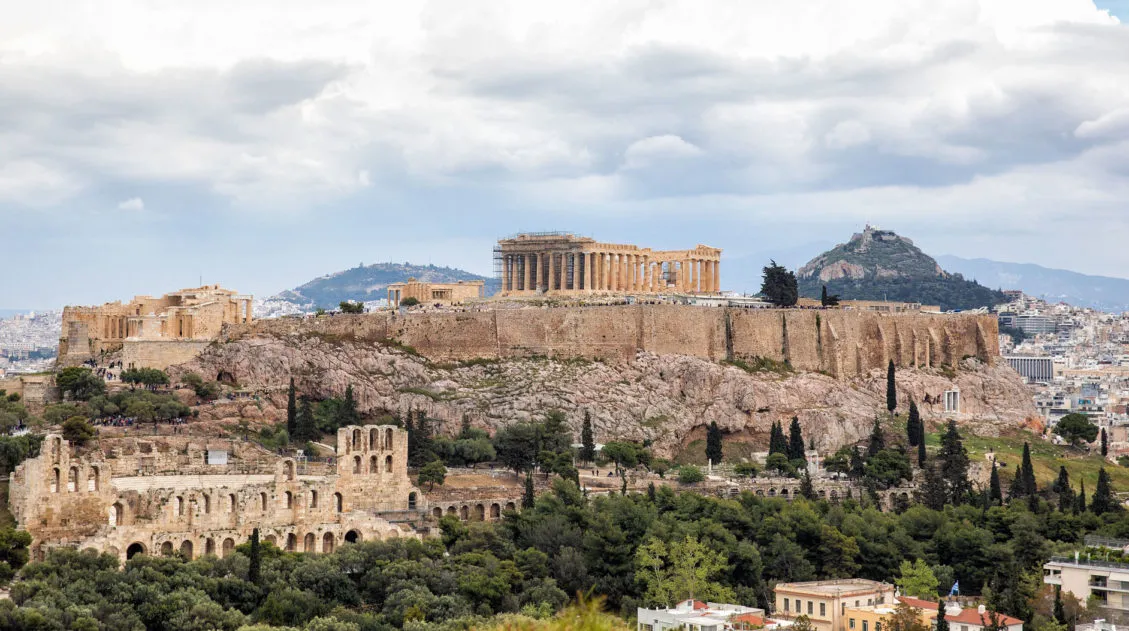






Comments 82